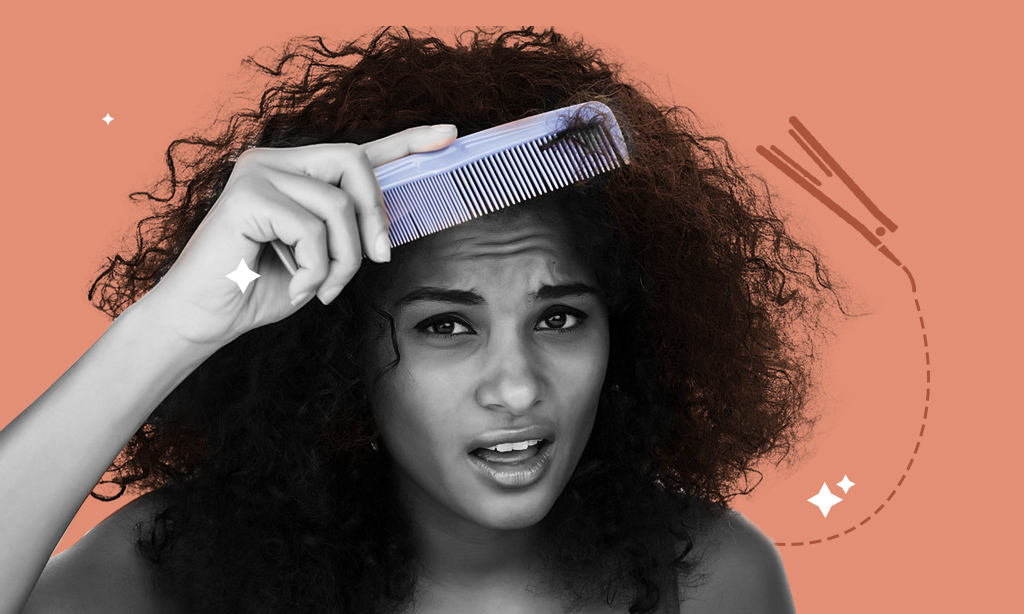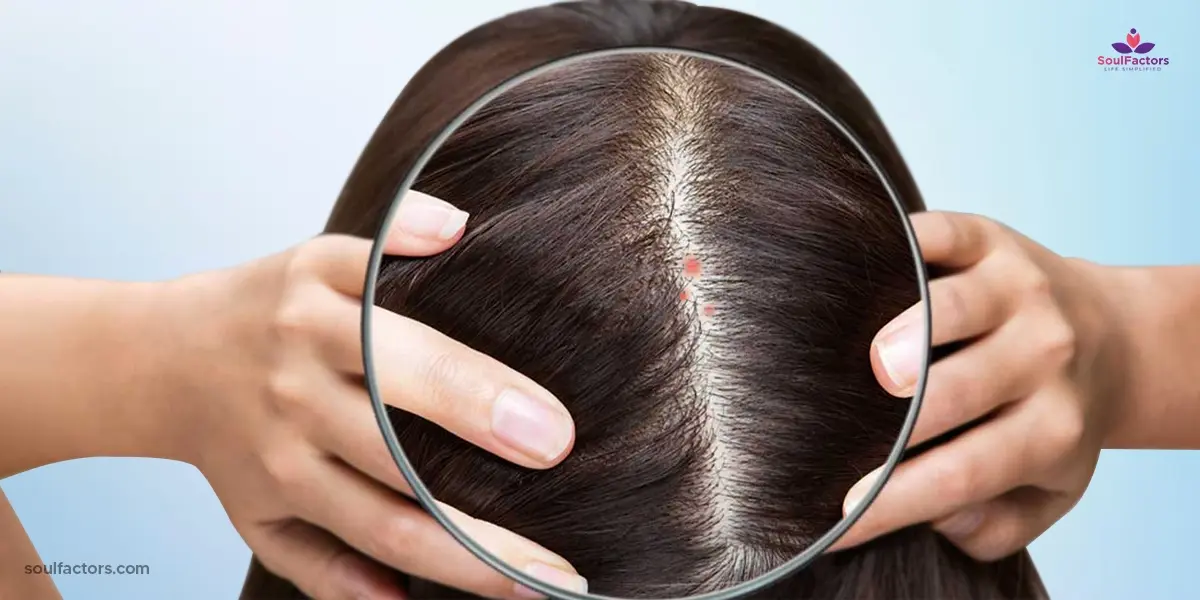Here’s How To Detangle Your Hair Knots Damage-Free!
Frizzy hair knots can really test your temper and leave you frustrated. Detangling the right way will save you time, energy, and your hair.
On Apr 8, 2023 – 5 minutes read

How do you detangle your super knotted hair without pain or breakage? After it gets difficult to run your fingers through the knots without yelping and wishing to cut the chunk out, your patience may be running thin. But hold off the frustrating thoughts! You must resist the urge to rip your hairbrush through the stubborn knots. Why?
Besides it being an annoying morning routine, aggressively brushing through the heavy knots can damage your hair. It causes major breakage, split ends, and hair loss, and makes your strands brittle over time. Does that sound like healthy untangling?
Detangle Your Hair Without Any Hair Damage!
Yes, your tangled hair gets stuck on everything. Even on the buttons of your clothes. You get frustrated and you pull at those knots with your fingers. Then it hurts. Sounds awfully familiar, right?

Be it short or long, fine strands, or chemically treated hair, knotted hair is not unknown to us women. But before you chop the knots off on impulse, skim through this quick guide to not regret the decision later. There are numerous ways to detangle hair —wet or dry, delicate nonetheless— in a completely sane way. But first, let’s see what causes tangling so that you can prevent knots in the first place.
What Causes Hair to Tangle?

A hair knot forms when two strands of your hair wrap around and intertwine each other. When does this happen? When the hair(1) cuticles —the outer layer of the hair— gets damaged, they open up and block each other, resulting in knots. Which hair is prone to tangles? Damaged and textured hair (curly or wavy) is more prone to tangles than those with silky and smooth hair.
Ahead, find a list of causes of hair knots.
- Harsh hair care products.
- Getting new chemically treated hairstyles every other day.
- Excessive heat styling.
- Tightly wound-up buns.
- Sleeping with your hair down or on unbrushed hair.
- Drying your hair by rubbing with a towel.
- Over Brushing or not brushing hair daily.
- Massaging your hair too harshly while shampooing.
- A windy day.
- Split ends.
Tips To Prevent Hair from Getting Tangled

Now that you know what factors contribute to hair tangling, it’s time to learn a few helpful tips along with dos and don’ts to prevent tangled hair.
- Brush your hair before showering. Focus on the ends, not the roots.
- Use less amount of shampoo on your strands and focus only on the scalp.
- Don’t underuse shampoo.
- Comb conditioner through the strands with a wide-tooth comb.
- Instead of rubbing with a towel, dry your hair by gently squeezing the water with a cotton t-shirt.
- If you prefer blow-drying, use a heat protectant and vented brush.
- Always sleep with a gentle updo to avoid sleeping on your hair strands.
- Switch from cotton pillowcases to silk pillowcases to avoid excessive friction.
- Add a hair mask to your hair care routine.
- Wear braids as your hairstyle to keep your hair in place, especially when it is windy.
- Wear a hat or a scarf to wrap and secure your hair on a windy to assure it is not all over the place.
- Get regular trims —every 4-6 weeks.
Read on to find out how to detangle your hair knots without damage, squirming, or screaming.
The Best Way To Detangle Your Hair

To dodge the torture of your hair resembling a hot messy net, detangling gently and carefully is recommended. You don’t want to tear half of your hair, right? Follow these steps and you can detangle your hair without pain or causing damage.
Moisturize or dampen your strands
No matter how dry your hair is, always moisture your strands before you start detangling. You can use water to simply spritz on your strands, detangling spray, conditioner, or any hair oil(2). Since dry hair is more susceptible to breakage, this added moisture allows smooth detangling, making it an important step you must not avoid. Besides, wet hair is elastic and more stretchy. Read less chance of breakage. So, damp hair gives the slip you need to detangle effortlessly.
To make your own detangling spray, combine one-half conditioner with one-half distilled water. Then, pour the solution into a spray bottle.
To detangle without detangler, combing through hair strands that are treated with a leave-in conditioner can smoothly detangle.
Start in sections
The next cardinal step is sectioning your hair. Whether you detangle wet or dry hair, brushing your hair in sections is always better. This way, you don’t have to aggressively break your tangled hair. Instead, it allows gentle detangling of hair.
Choose the right tool to detangle your hair
A wide-tooth comb with generously spaced bristles or a paddle brush(3) helps you to glide through your knots without having to pull at them. Then, of course, moisturized hair makes it so much easier to brush. Or you can use your fingers to gently work through them. For wet hair, using a wet brush can help more as it can bend along with your hair strands. For thicker hair, use a brush with long and short teeth. This way the shorter ones smooth the hair cuticles while the longer ones detangle.
Brush gently, starting at the ends
Always begin at the ends of your hair. Then, slowly work your way up towards your roots without tugging or ripping. This is the trick! The added moisture can help you detangle without any pain. For fine hair, start from the length and work your way downwards. Then, work on your roots in small sections. For curly or thick hair, gently tug apart those super knots with your fingers. Then, separate the strands from each other.
For oily hair, you don’t want to add more oil into the mix. So, use a silicone-based detangling product. If you have styled hair, particularly with layers of hairspray, do not wet your hair. Instead, try applying an oil-based hair mask (you can whip easily at home) or conditioner onto your dry hair.
Detangling hair may seem challenging. But if you follow these steps and work on your tangles gently, you won’t come anywhere close to resembling the normal hot mess you have on your head now. So, follow the steps to detangle and follow the tips to prevent tangling in the first place.

Subscribe to Newsletter
Elevate your routine, stay on trend, and embrace a personalized beauty journey with our curated insights.





Write a Comment